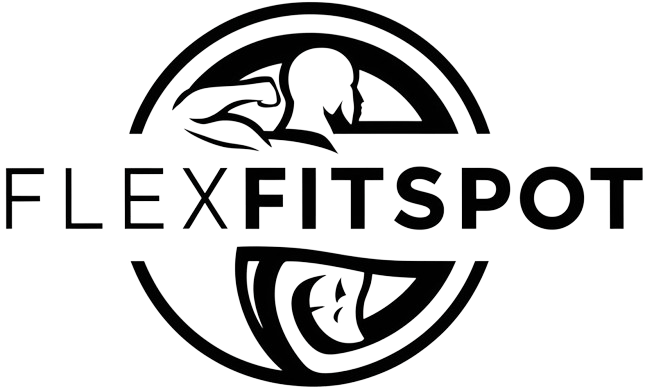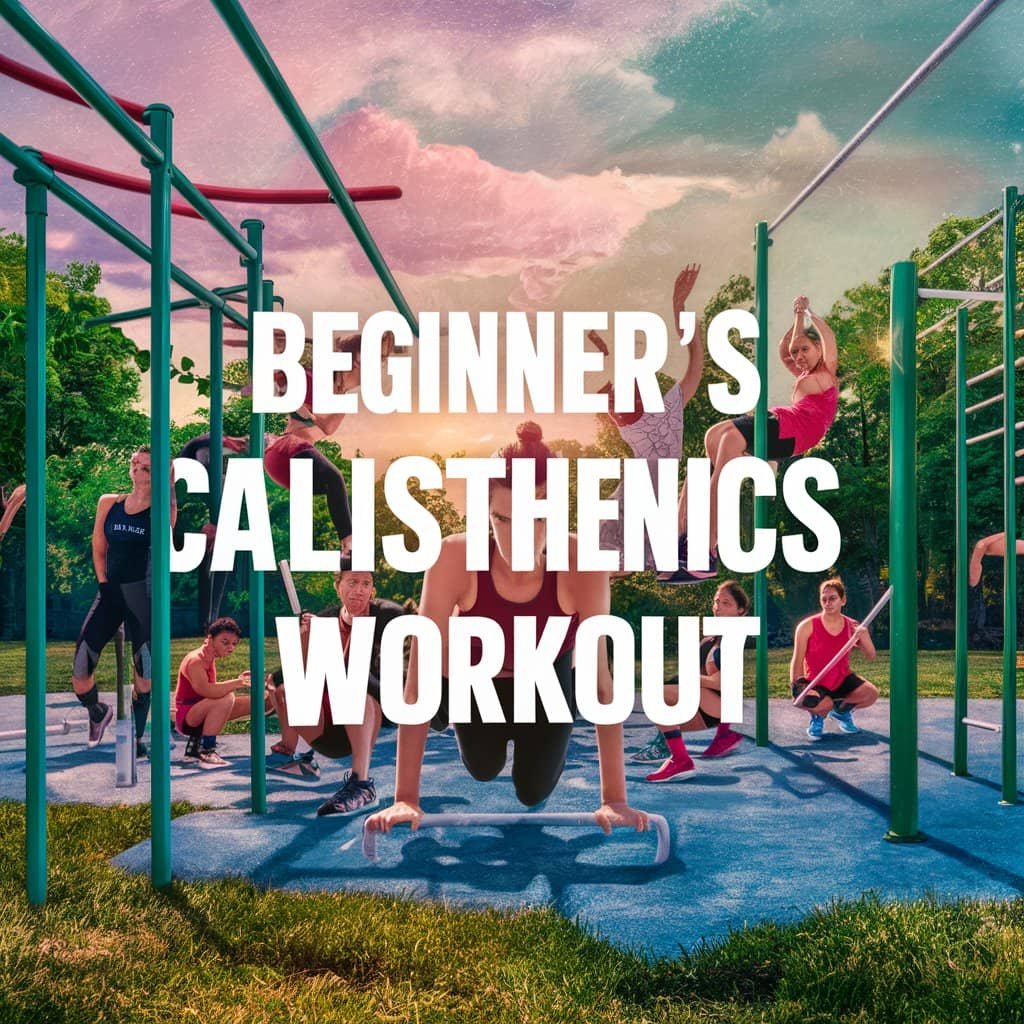Introduction to Beginner Calisthenics Workout
Calisthenics is a form of exercise that relies on using one’s own body weight to build strength, flexibility, and overall fitness. The term originates from the Greek words “kallos,” meaning beauty, and “sthenos,” meaning strength. This ancient practice, with roots tracing back to Greek and Roman times, has undergone a renaissance in recent years, becoming a cornerstone of modern fitness routines.
One of the primary reasons for the resurgence of calisthenics is its accessibility. Unlike traditional gym workouts that require extensive equipment, calisthenics can be performed virtually anywhere, making it an ideal starting point for beginners. Exercises such as push-ups, pull-ups, squats, and planks form the foundation of calisthenics, allowing individuals to harness their body weight to develop muscle strength and endurance.
Calisthenics offers numerous benefits beyond just muscle building. It enhances flexibility, improves balance, and boosts overall body coordination. These exercises engage multiple muscle groups simultaneously, leading to a more comprehensive and functional form of fitness. For beginners, this holistic approach provides a balanced workout, reducing the risk of injury that can sometimes accompany more advanced or equipment-heavy routines.
Another appealing aspect of calisthenics is its scalability. Exercises can be modified to match an individual’s fitness level, making it easy for beginners to start small and gradually increase the intensity of their workouts. This adaptability ensures that as one’s strength and proficiency improve, the exercises can become more challenging, fostering continuous growth and development.
In recent years, the popularity of calisthenics has been bolstered by the rise of social media and online fitness communities. Influencers and fitness enthusiasts share routines and tips, creating a supportive environment for individuals to learn and thrive. This community-driven aspect adds an element of motivation and accountability, which is particularly beneficial for those new to the world of fitness.
For beginners looking to embark on a fitness journey, calisthenics offers a practical, effective, and enjoyable starting point. Its focus on body weight exercises ensures that individuals can develop strength, flexibility, and balance without the need for expensive gym memberships or equipment. As such, calisthenics stands out as an excellent choice for anyone seeking to master the basics of physical fitness in 2024.
Benefits of Beginner Calisthenics Workout
Calisthenics offer a multitude of advantages, particularly for those new to fitness. One of the most significant benefits is the accessibility of these exercises. Unlike traditional gym workouts that require specialized equipment, calisthenics rely solely on body weight, making them perfect for those who prefer to work out at home or in outdoor spaces. This ease of access eliminates barriers to entry, allowing beginners to start their fitness journey with minimal investment.
Another key advantage of calisthenics is the improvement in functional strength and coordination. These exercises mimic everyday movements, thereby enhancing the body’s ability to perform daily tasks more efficiently. Functional strength gained through calisthenics translates to better balance, agility, and overall physical performance.
Calisthenics also offer the potential for progressive overload, a fundamental principle in strength training. As beginners grow stronger, they can gradually increase the difficulty of exercises by modifying angles, adding repetitions, or incorporating holds. This progressive approach ensures continuous improvement and keeps the workouts challenging and engaging.
In addition to strength gains, calisthenics significantly enhance joint and muscle health. The full range of motion involved in these exercises promotes flexibility and joint stability, reducing the risk of injuries. The emphasis on controlled, deliberate movements also helps in developing muscular endurance and resilience.
Beyond the physical benefits, calisthenics have notable mental advantages. The discipline required to adhere to a workout routine fosters a sense of commitment and perseverance. As beginners witness their progress and achieve new milestones, their confidence and self-esteem naturally increase. This mental fortitude often extends beyond fitness, positively impacting other areas of life.
In summary, calisthenics provide a comprehensive workout solution for beginners, offering improvements in functional strength, joint health, and mental well-being without the need for expensive equipment. These benefits make calisthenics an ideal choice for those embarking on their fitness journey in 2024.
Setting Realistic Goals
Embarking on a calisthenics journey requires a thoughtful approach to goal-setting. For beginners, setting realistic and achievable goals is paramount to ensure a sustainable and successful workout routine. The cornerstone of this process is starting slow and prioritizing proper form and technique over intensity. This foundational approach not only helps prevent injuries but also builds a solid base for future progress.
Begin by identifying your short-term and long-term goals. Short-term goals might include mastering basic movements such as push-ups, squats, and planks within the first few weeks. On the other hand, long-term goals could encompass more advanced skills like pull-ups, muscle-ups, or handstands, which may take several months to achieve. Breaking down these goals into smaller, manageable milestones will make the overall journey less daunting and more rewarding.
Tracking your progress is essential for staying motivated and gauging improvement. Maintain a workout journal or use a fitness app to record your exercises, repetitions, and any notable changes in your performance. Regularly reviewing this log will provide tangible evidence of your progress, reinforcing your commitment to the routine.
Additionally, gradually increase the intensity of your workouts to continue challenging your body. This could involve adding more repetitions, incorporating new exercises, or reducing rest times. However, it is crucial to listen to your body and avoid overexertion. Progression should be steady and controlled, ensuring that each new challenge is within reach without compromising form.
Staying motivated throughout your calisthenics journey can be challenging, but setting realistic goals and celebrating small victories will help maintain your enthusiasm. Surround yourself with a supportive community, whether online or in-person, to share experiences and encouragement. Remember, the key to mastering calisthenics lies in consistent effort, patience, and a well-structured plan that evolves as you grow stronger and more skilled.
Essential Warm-Up and Cool-Down Routines
In the realm of calisthenics, ensuring proper warm-up and cool-down routines is paramount for both injury prevention and performance optimization. For beginners, these routines set the foundation for a safe and effective workout regimen. A well-structured warm-up serves to elevate heart rate, increase blood flow to muscles, and enhance joint mobility, thereby preparing the body for the physical demands of calisthenics exercises.
To begin, a dynamic warm-up should last approximately 10-15 minutes and include exercises such as jumping jacks, high knees, and arm circles. These movements not only raise the body’s temperature but also activate the nervous system, improving coordination and muscle responsiveness. Following these general movements, incorporating specific dynamic stretches like leg swings, hip circles, and torso twists can further prime the muscles and joints that will be engaged during the workout.
Conversely, the cool-down phase focuses on gradually lowering the heart rate and aiding muscle recovery. This phase typically spans 10-15 minutes and includes static stretching and deep breathing exercises. Key stretches should target major muscle groups used during the workout, such as hamstring stretches, quadriceps stretches, and shoulder stretches. Holding each stretch for 20-30 seconds helps to alleviate muscle tension and enhance flexibility.
Physiologically, warm-ups increase synovial fluid production within joints, reducing the risk of strains and sprains. They also dilate blood vessels, ensuring an efficient supply of oxygen to working muscles. Meanwhile, cool-down routines help in the removal of metabolic waste products like lactic acid, which can accumulate during intense physical activity. This process minimizes muscle soreness and accelerates recovery, preparing the body for subsequent workouts.
Incorporating these essential warm-up and cool-down routines into a beginner calisthenics workout not only fosters a safer exercise environment but also maximizes performance and long-term physical benefits. By adhering to these practices, individuals can ensure a holistic approach to their fitness journey in 2024.
Beginner Calisthenics Workout
For those new to calisthenics, starting with fundamental exercises is crucial for building strength, improving flexibility, and establishing proper form. Below is a detailed list of foundational calisthenics exercises suitable for beginners, complete with step-by-step instructions, tips for maintaining correct form, and common mistakes to avoid.
Push-Ups
Push-ups are a staple in any calisthenics routine. Begin in a plank position with your hands placed shoulder-width apart. Lower your body until your chest nearly touches the floor, then push back up to the starting position. Keep your body in a straight line and engage your core throughout the movement. Common mistakes include flaring the elbows out too wide and sagging the hips. For beginners, knee push-ups or incline push-ups against a bench or wall can serve as modifications.
Pull-Ups
Pull-ups primarily target the back and biceps. Grasp a pull-up bar with an overhand grip, hands slightly wider than shoulder-width apart. Pull your body upwards until your chin is above the bar, then lower back down with control. Keep your core tight and avoid swinging your legs. A common mistake is not achieving a full range of motion. Beginners might use resistance bands for assistance or perform negative pull-ups by jumping to the top position and slowly lowering down.
Squats
Squats are essential for leg strength and overall mobility. Stand with feet shoulder-width apart, toes slightly pointed out. Lower your body by bending at the knees and hips, keeping your chest up and knees tracking over your toes. Aim to lower until your thighs are parallel to the ground, then return to standing. Avoid letting your knees cave inward or heels lift off the ground. Beginners can start with chair squats or wall squats for support.
Lunges
Lunges improve balance and target the lower body. Step forward with one foot, lowering your hips until both knees are bent at a 90-degree angle. Ensure your front knee is directly above your ankle and your back knee hovers just above the ground. Push off the front foot to return to the starting position and repeat on the other side. Common mistakes include leaning forward and allowing the front knee to extend beyond the toes. Beginners may use a wall or chair for balance support.
Planks
Planks are excellent for core stability. Start in a forearm plank position with elbows directly under the shoulders and body in a straight line from head to heels. Hold this position, keeping your core engaged and avoiding sagging hips or raised buttocks. A common mistake is letting the lower back collapse, leading to strain. Beginners can start with knee planks or perform the plank on an elevated surface.
To ensure accurate form and execution, consider referring to demonstration videos or illustrations. These resources can provide visual guidance and help prevent injury as you progress in your calisthenics journey.
Creating a Weekly Workout Plan
Establishing a structured weekly calisthenics workout plan is crucial for beginners aiming to build a solid foundation in 2024. A well-balanced routine not only ensures comprehensive muscle development but also helps in avoiding injuries and overtraining. To start, it is essential to distribute your workouts across different muscle groups, such as upper body, lower body, and core, to achieve holistic fitness.
For a balanced approach, consider dedicating specific days to target different muscle groups. For instance, Monday and Thursday can be allocated for upper body exercises like push-ups, pull-ups, and dips. These exercises are fundamental in building strength in your chest, shoulders, and arms. Tuesday and Friday can focus on lower body workouts, including squats, lunges, and calf raises, which are vital for enhancing leg and glute strength. Wednesday and Saturday can be reserved for core exercises such as planks, leg raises, and bicycle crunches, aiming to strengthen the abdominal and lower back muscles.
It’s equally important to integrate rest days into your weekly plan. Rest days, typically on Sundays, give your muscles time to recover and grow, significantly reducing the risk of injury. Beginners should start with a manageable intensity and gradually increase it as their endurance and strength improve. This progressive overload is key to continuous improvement and avoiding stagnation.
Here is a sample beginner-friendly weekly plan:
Monday: Upper Body – Push-ups, Pull-ups, Dips
Tuesday: Lower Body – Squats, Lunges, Calf Raises
Wednesday: Core – Planks, Leg Raises, Bicycle Crunches
Thursday: Upper Body – Incline Push-ups, Chin-ups, Tricep Dips
Friday: Lower Body – Bulgarian Split Squats, Glute Bridges, Step-ups
Saturday: Core – Side Planks, Russian Twists, Flutter Kicks
Sunday: Rest Day
As you advance, you can increase the number of sets and repetitions or incorporate more challenging variations of each exercise. Keeping track of your progress and making adjustments as needed will ensure you continue to see improvements. Remember, consistency and gradual progression are the cornerstones of a successful calisthenics workout plan.
Nutrition and Hydration Tips for Optimal Performance
Embarking on a calisthenics journey necessitates a keen focus on nutrition and hydration to ensure optimal performance and recovery. A balanced diet rich in proteins, carbohydrates, and healthy fats serves as the foundation for muscle growth and overall health. Proteins, found in sources such as lean meats, legumes, and dairy products, are crucial for muscle repair and growth, enabling beginners to build strength effectively. Carbohydrates, sourced from whole grains, fruits, and vegetables, provide the necessary energy required for intense calisthenics workouts. Healthy fats, obtained from avocados, nuts, and olive oil, support joint health and hormone production, which are vital for sustained physical activity.
In addition to macronutrients, micronutrients play a significant role in a calisthenics routine. Vitamins and minerals, such as vitamin D, calcium, and magnesium, support bone health and muscle function. Incorporating a variety of colorful vegetables and fruits into one’s diet ensures an adequate intake of these essential nutrients.
Hydration is another critical component of performance and recovery. Water is indispensable for maintaining muscle function and preventing dehydration, which can impair physical performance and cognitive function. For individuals engaging in calisthenics, it is recommended to drink at least 2-3 liters of water daily, with adjustments based on the intensity and duration of the workout. Furthermore, electrolytes, including sodium, potassium, and magnesium, are vital for maintaining fluid balance and preventing cramps. These can be replenished through electrolyte-rich beverages or foods such as bananas, nuts, and leafy greens.
In summary, a well-rounded approach to nutrition and hydration can significantly enhance the effectiveness of a beginner’s calisthenics routine. By prioritizing a diet rich in essential nutrients and maintaining proper hydration, individuals can support muscle growth, improve performance, and expedite recovery, setting the foundation for long-term success in their fitness journey.
Tracking Progress and Staying Motivated
Effective tracking of your progress is a crucial component in mastering a beginner calisthenics workout routine. One of the most effective methods for tracking progress is maintaining a workout journal. By documenting your workouts, you can monitor improvements in strength, endurance, and flexibility. Record the number of reps, sets, and any changes in your exercise routine. Pair this with taking regular measurements, such as body weight, body fat percentage, and muscle measurements, to get a comprehensive view of your progress.
In addition to manual tracking, utilizing fitness apps can provide valuable insights. Many apps offer features like progress charts, reminders, and goal-setting options, which can help you stay organized and motivated. Apps also often include demo videos and community support, enhancing both learning and accountability.
Staying motivated is key to long-term success in calisthenics. One effective strategy is setting new challenges. As you master basic exercises, gradually increase the difficulty or complexity. This not only keeps the routine engaging but also encourages continuous improvement. Finding a workout partner or joining a community can also be immensely beneficial. Working out with others can provide support, make the experience more enjoyable, and foster healthy competition.
Celebrating milestones, no matter how small, can also boost motivation. Acknowledge and reward yourself when you reach a new personal best or complete a particularly challenging workout. This positive reinforcement can help maintain enthusiasm and dedication.
Overcoming plateaus and staying consistent despite setbacks are challenges every fitness enthusiast faces. When progress seems to stall, consider varying your routine to include different exercises that target the same muscle groups. This can prevent boredom and stimulate muscle growth. If setbacks occur, focus on your long-term goals and remind yourself of the progress you’ve made so far. Maintaining a positive mindset and being adaptable can make a significant difference in sustaining your calisthenics journey.




























